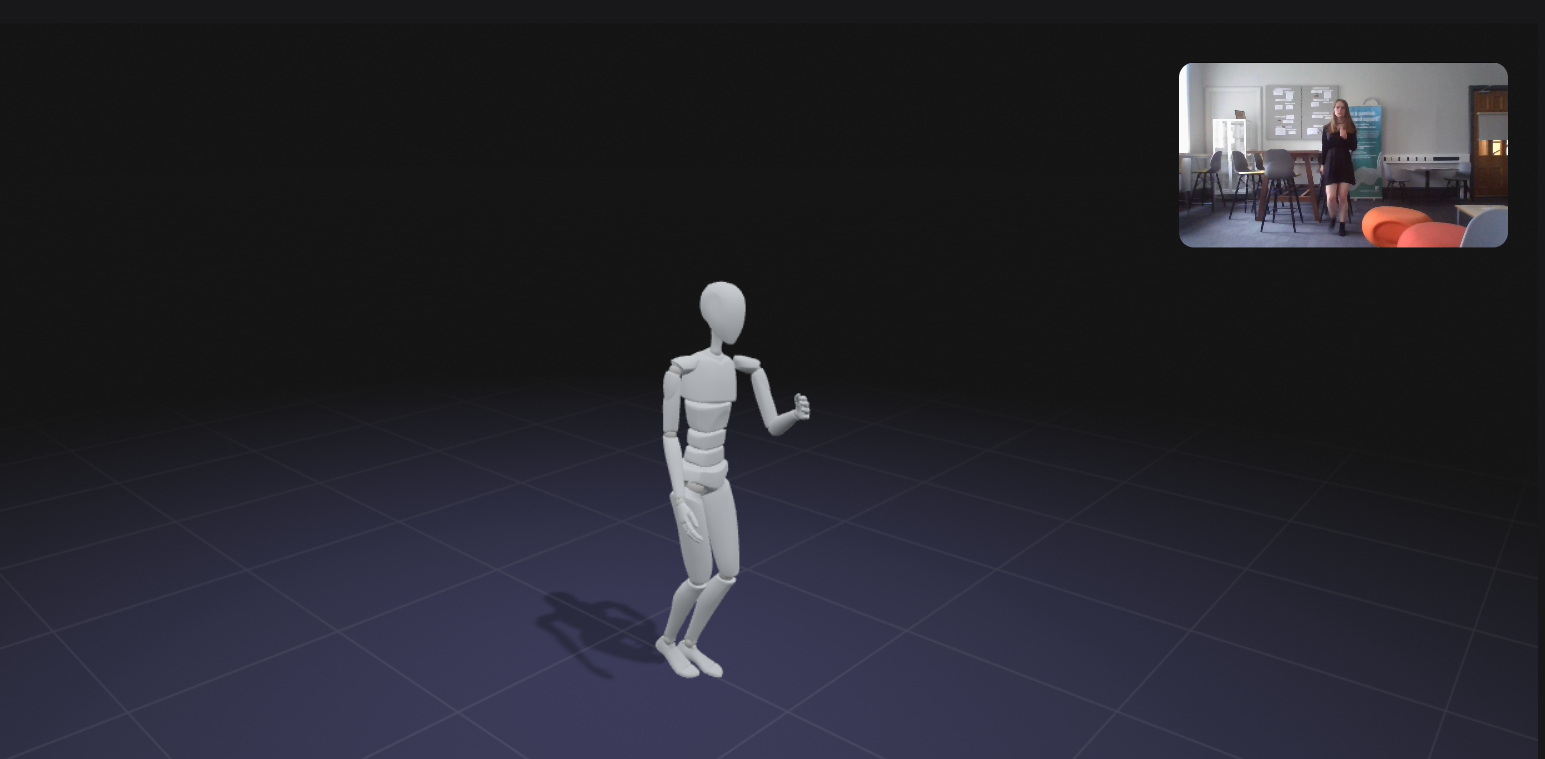
Before
Before I started recording my animations, I wanted to ensure I had a broad range of movement to work with. This includes basic walking movement, reading a book, brushing hair and doing a variety of poses. I also did movements to replicate actions such as moving in a wheelchair and using a walking stick due to these being necessary tools needed for movement for those with physical disabilities. The videos included a variety of objects to showcase how much motion tracking can be affected in negative ways if certain objects in a scene aren't tracked, with animations glitching, moving incorrectly or being unable to process certain everyday movements. Furthermore, I also wanted to see if the AI tracking would be affected by colour and scenery. I decided to wear two different outfits across two different scenes during this project to examine if the AI would change its tracking based on clothing, colour or background and how it could be biased against certain tones or settings.
The animations were created in Rokoko studio and were then downloaded to my computer. Their file type was changed to MP4 which made it simpler to use in this project.
The Results
The results of this work helped to show me that AI body tracking is biased in favour of the human body and lighter colours. The AI struggled to comprehend complex movement alongside the movement of darker shades, which led to inaccurate body tracking. I have provided a link to the animations below:
After
After completing my animations and analyzing the results, I came to the conclusion that the AI motion tracking of the human body has many biases that could affect the final result of the animations. To start with, the AI showed a bias against darker clothing, struggling to track movements when wearing black yet capturing the exact same movements much more accurately when wearing lighter clothing. It is possible that this may also relate to darker skin tones, making the AI racially biased alongside biased against certain colours. Furthermore, I found that the AI is biased against non-human objects, even if they are moving. It's not just that they don't capture the object, they don't appear to process their existence, causing some animations to be completely inaccurate due to certain objects being necessary for movements. This was especially clear when using a walking stick as part of an animation, with the animation showing no indication of the action of walking with the assistance of a walking stick. This not only leads to incorrect body tracking but can also discriminate against disabled users who need non-human assistance for mobility.